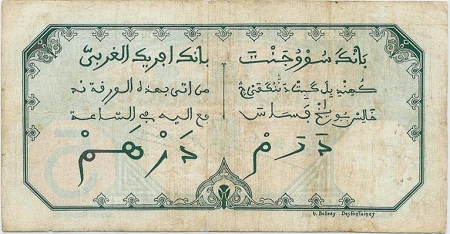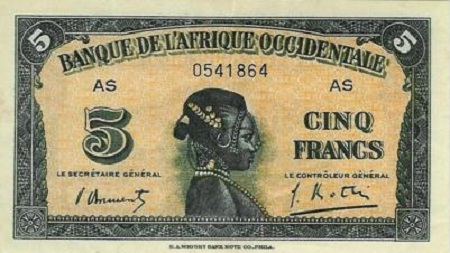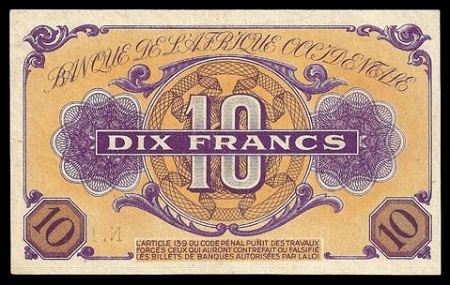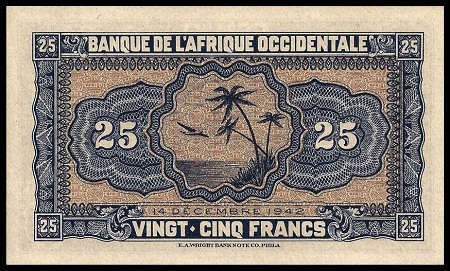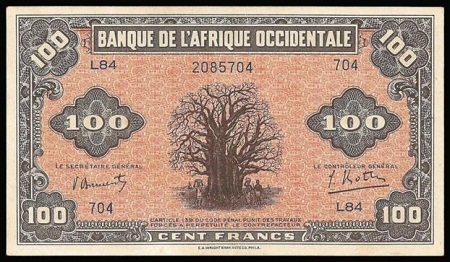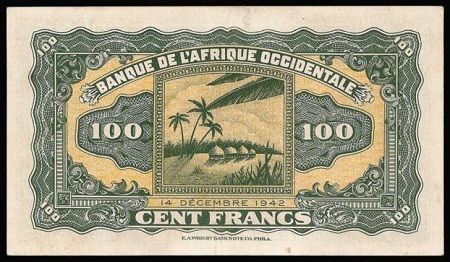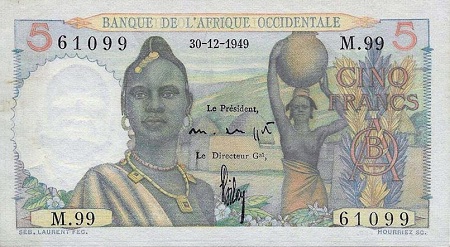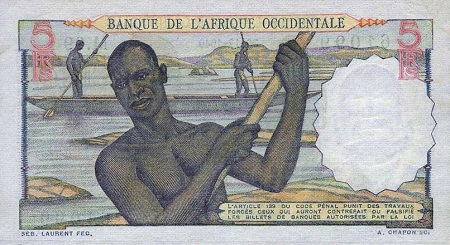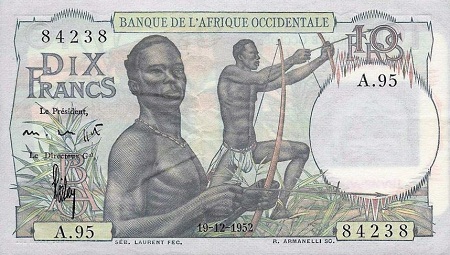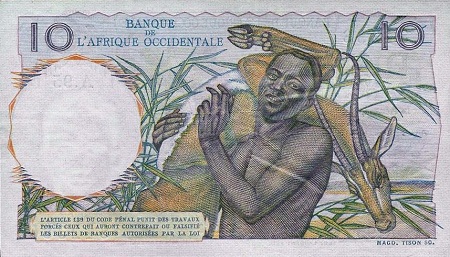French West African Banknotes
Various Banknotes

The Scramble for Africa took place between 1880 and 1914. It was a European invasion and colonization effort to expand territories, influence and of course wealth, to the major European powers at the time. At the end, Europe had control over the vast majority of Africa with two exceptions: Liberia and Ethiopia. Liberia, an independent state set up for freed slaves from the United States was off limits to European invasion. Ethiopia remained independent due to Emperor Menelik II’s efforts to play Europeans against each other, and gained modern weapons from competing countries who were threatening to invade. Although Italy made an attempt, the Ethiopian forces defeated them in 1896 at the Battle of Adowa, and no further attempts to colonize Ethiopia were made.
The main reason for colonization was of course money. What started off as a trade union between the explorers and the many tribes soon turned into a contract, and shortly thereafter into colonization. Peanuts were considered a delicacy in those days and many farms were set up to export them to Europe. Ivory was another very popular item that was bought cheaply and sold at great profit. Several other items were there for the taking: Cocoa, Cotton, Palm Oil, Then the great rubber boom came and quickly took root as the main export. Through it all though, the worst was of course slavery. Whether exported to Europe or the Americas, or used for cheap labor within Africa, slaves were a constant need and the colonization was all the more profitable due to their sweat and suffering. Missionaries were already a presence in Africa, but their influence against slavery was too often inconsequential. Slavery persisted in Africa between tribes and it was a natural course of action to sell their fellow Africans to the Europeans, and to use them on their farms.
A popular movement in Europe called Eugenics, a belief in selective breeding to weed out undesirable traits to improve humans, made it possible for many people Europeans to ascribe a sense of superiority over Africans (which many Europeans at the time viewed as backwards and sloth-like), and not feel as if they were anything other than chattel – a slave which is considered personal property. Together eugenics and racist attitudes made the use of slaves a very popular and cost effective method of labor.
There were some efforts to thwart the Europeans, but modern weapons, rifles, cannon, and later, machine guns, were too devastating against the small bands of tribes who rebelled with spears and arrows. Still, there were bands of rebels that caused some considerable trouble with colonization efforts for many years.
The French were caught up in the scramble as much as the Germans, Portuguese, British, Belgians and Italians. At first, the French ruled all their African territories from a base in Senegal, but in the last years of the 19th century, they were under pressures from various organizations in Europe to rule territories with a less militant approach. As a result, they decided to take all their African possessions located west of Gabon and placed them in control of a Governor located in Senegal. By 1904 this new area was named Afrique Occidental Francaise (AOF), or French West Africa. These areas encompassed what are now Mauritania, Senegal Mali, Guinea, Ivory Coast, Burkina Faso, Benin and Niger.
Gabon later became the controlling seat of the Afrique Equatorale Francaise (AEF) or French Equatorial Africa, which encompassed what are now Gabon, Chad, Central African Republic, and Republic of Congo.
The French had a strong movement to nationalize those who were subjects under their colonization. Each African under French control was considered a French Subject. To gain Citizenship one major method was to serve in the colonial armies. Slaves who could escape could serve in the army and gain freedom, money and become a citizen with all rights after a service of 6 years. Many did so, fighting against rebel armies led by deposed tribal chiefs. Some male Africans were even drafted and served in Europe during WWI and WWII. The WWI era, when slavery was still legal in limited to those born unto slavery, even saw slaves owned by wealthy Africans sent in the place of the drafted as a proxy. Most of these slaves who served returned to claim their freedom, but a few returned to their masters and resumed their slave status.
During the WWII era, the French West African government supported the Vichy government, but quickly switched back to the Free French after 1942 when the allies landed in North Africa.
The growing movement of independence in Africa was considered during the Brazzaville Conference in 1944. The conference brought about political reforms allowing Africans to participate in government and to give more power to local councils. In 1956 the Enabling Law was passed, allowing local governments to administer their individual territories in French West Africa. In 1958 autonomous rule was given to each territory, and in 1959 French West Africa federation had been dissolved and each territory had become fully independent.
Banknotes from the area show a broad spectrum of the area. Some banknotes depict images of persons in everyday life such as hunting, fishing, etc, where others show artwork, or simply a portrait and scrollwork. These banknotes are highly sought after and are commanding ever increasing prices as they are winding up in collectors hands. Below are a few examples of banknotes from the region.

